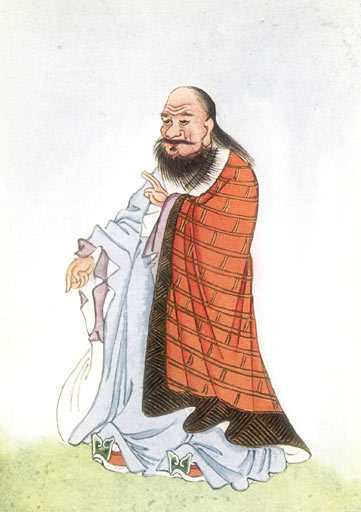Philosopher of the month: Lao Tzu
This August, the OUP Philosophy team is honoring Lao Tzu as their Philosopher of the Month. But who was this mysterious figure? When did he live, what did he teach, and what exactly is the ‘Tao’? Read on to find out more about Taoism:
Who was Lao Tzu?
Lao (Laozi) Tzu is credited as the founder of Taoism, a Chinese philosophy and religion. An elusive figure, he was allegedly a learned yet reclusive official at the Zhōu court (1045–256 BC) – a lesser aristocrat of literary competence who worked as a copyist and archivist. Scholars have variously dated his life to between the third and sixth centuries BC, but he is best known as the author of the classic Tao Te Ching (‘The Book of the Way and its Power’).
According to tradition, Lao Tzu is believed to be an older contemporary of Confucius and the founding figure of Taoism in China. Despite this, many modern scholars doubt the existence of Lao Tzu as a historical figure, and postulate that the Tao Te Ching was written by various authors from the fourth and third century BC. Regardless of Lao Tzu’s historical or mythical status, Taoism is a major school of thought and has been influential throughout Chinese culture, art, and religion.
What is Taoism?
According to Lao Tzu’s teachings, the Tao (Dao), or ‘Way’ is at the center of all life –conceived as the complete totality of existence. The way to mystical freedom is by way of letting go of conventional concerns and achieving union with the Tao. Once union has been achieved, such conditions as poverty and wealth will become meaningless, and ordinary societal values will no longer apply.
The Oxford Companion to Philosophy 2nd edition states that:
 Image Credit: ‘Portrait of Lao Zi (Lao Tzu); February 1922, from Edward Theodore Chalmers Werner’s ‘Myths and Legends of China’. Public Domain, via Wikimedia Commons.
Image Credit: ‘Portrait of Lao Zi (Lao Tzu); February 1922, from Edward Theodore Chalmers Werner’s ‘Myths and Legends of China’. Public Domain, via Wikimedia Commons.“The basic tenet of Taoist thought is that the operation of the human world should ideally be continuous with that of the natural order, and that one should restore the continuity by freeing the self from the restrictive influence of social norms, moral precepts, and worldly goals.”
In essence, Taoism advocates humility, religious piety and harmony with the Tao. Lao Tzu was seen as the living representation of the Tao – bringing salvation and unity into the world.
What is the Tao Te Ching?
The Tao Te Ching (or Daodejing) consists of eighty-one aphoristic and poetic chapters – of what is known today as a mystical, religious, or philosophical text – written by Lao Tzu. It is a work about which there is little agreement. It is a source of Chinese and East Asian reflective traditions, frequently translated into European languages and confusingly subject to diverse and starkly contrasting description and interpretation. It is generally agreed however, that it existed in written form from approximately 300 BC, as the result of earlier oral transmission.
The Tao Te Ching broadly describes the Tao as the source and ideal of existence. It is understood as a series of contradictions; it is unseen, but not transcendent, immensely powerful yet supremely humble, being the root of all things. People have desires and free will (and thus are able to alter their own nature), however many act ‘unnaturally’, thus upsetting the natural balance of the Tao. The Tao Te Ching intends to return its students to their natural state – in perfect harmony with the Dao.
It starts with the classic lines:
The Tao that can be spoken is not the eternal Tao
The name that can be named is not the eternal name
The nameless is the origin of Heaven and Earth
The named is the mother of myriad things
Previous ‘Philosophers of the Month’ have included Jacques Derrida, Ludwig Wittgenstein, and Søren Kierkegaard. Why not follow #PhilosopherOTM on Twitter for more philosophy content?
Featured Image: ‘The Three Gorges Landscape China – Yangtze River’ by cq19690527. CC0 Public Domain via Pixabay.
The post Philosopher of the month: Lao Tzu appeared first on OUPblog.

Oxford University Press's Blog
- Oxford University Press's profile
- 238 followers



